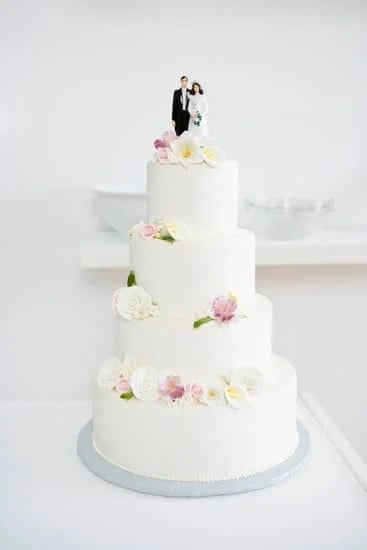Have you ever wanted to try your hand at cake decorating but didn’t have a piping bag on hand? In this article, we’ll show you how to make a piping bag for cake decorating using common household items. Piping bags are an essential tool for creating beautifully decorated cakes, and by making your own, you can save time and money while also adding a personal touch to your creations.
When it comes to cake decorating, the piping bag is a fundamental tool that allows for precision and artistry in creating intricate designs with icing. Making your own piping bag opens up a world of possibilities for creativity and customization. Whether you’re a beginner looking to explore the world of cake decorating or a seasoned baker wanting to try something new, this DIY approach can be a game changer.
In the following sections, we will provide you with all the information you need to make your own piping bag from scratch. From the materials needed and step-by-step instructions to tips for success and different piping techniques, this comprehensive guide will equip you with the knowledge and skills necessary to create professional-looking designs on your baked goods.
Whether it’s for a special occasion or just for fun, making your own piping bag will open up endless opportunities for creativity in the kitchen.
Materials Needed
Piping bags are an essential tool for cake decorating, allowing for precision and control when applying icing and other decorative elements to baked goods. While store-bought piping bags are readily available, making your own can be a cost-effective and sustainable alternative. In this section, we will provide a detailed list of all the materials needed to make a DIY piping bag, as well as alternative options for those hard-to-find items.
Main Materials
To make a basic DIY piping bag, you will need parchment paper or plastic wrap. Parchment paper is often preferred for its sturdiness and ability to hold its shape, while plastic wrap can also be used in a pinch. Other alternatives include wax paper or even heavy-duty freezer bags if parchment paper or plastic wrap are not available.
Sealing Method
In addition to the main material, you will also need something to seal the piping bag. This could be as simple as tape for parchment paper, or twisting and securing the ends of plastic wrap. For a more professional touch, consider using binder clips or rubber bands to seal the top of the piping bag securely.
Add-Ons
For added convenience and versatility, consider adding couplers and decorating tips to your homemade piping bag. Couplers allow for easy interchangeability of decorating tips, while various types of tips can create different decorative effects. These additional tools can elevate the quality of your cake decorating.
By gathering these materials and alternatives, you’ll have everything you need to create your own customized DIY piping bag for cake decorating. With these simple items at your disposal, you’ll be ready to move on to the step-by-step instructions in the next section on how to make a piping bag from common household items. including how to use parchment paper or plastic wrap effectively as well as maintaining their decoration cleanliness after useatty cakes cleaner aft.
Step-by-Step Instructions
Need to decorate a cake but don’t have a piping bag on hand? No problem. Making your own piping bag from common household items is easier than you might think. Not only is it convenient, but it also allows for a more personalized touch to your cake decorating. In this section, we will provide a comprehensive guide on how to make a piping bag from everyday items, with step-by-step instructions that are clear and easy to follow.
To begin, gather the following materials: a small resealable plastic bag (such as a sandwich or freezer bag), scissors, and whatever decorative icing tip you plan to use. If you don’t have icing tips, not to worry – you can also create different shapes by simply cutting the tip of the plastic bag at different angles. Once you have gathered your materials, it’s time to move on to the next step.
First, take the resealable plastic bag and cut off one of the bottom corners at a slight angle. The size of the opening will depend on the thickness of the lines you want to pipe onto your cake, so start with a smaller hole and gradually make it larger if needed.
Then, insert the icing tip into the hole – if you’re using one – pushing it down until it’s snug against the inside corner of the bag. And just like that, you’ve made your very own piping bag for cake decorating.
Now that you have your homemade piping bag ready, fill it with your desired frosting or icing and twist or fold over the top of the bag to secure it shut. Hold onto the twisted/folded part as you pipe decorations onto your cakes or other baked goods. And there you have it – a simple yet effective way to make a piping bag for cake decorating using common household items.
Tips and Tricks for Success
Making your own piping bag for cake decorating can be a cost-effective and convenient alternative to purchasing disposable or reusable ones. However, ensuring that your homemade piping bag is durable and leak-proof requires some expert tips and tricks.
Choosing the Right Material
When making a DIY piping bag, it’s important to select the right material to ensure that it can withstand the pressure of the icing without tearing or leaking. One of the most popular options is using parchment paper, as it is sturdy and allows for easy folding and shaping. Another alternative material is plastic wrap, which can also be used effectively for creating a makeshift piping bag.
Securing the Seal
To prevent any leakage while decorating your cakes or pastries, it is crucial to secure the seal of your homemade piping bag. Before adding the icing, ensure that you twist and fold the top of the bag tightly to create a secure closure. You can also use a rubber band or tape to further secure the seal and prevent any potential leaks.
Troubleshooting Common Issues
Even with careful preparation, issues may arise when using a homemade piping bag for cake decorating. If you experience difficulties with consistent icing flow or if the tip becomes clogged, try adjusting the pressure applied to the bag or inspecting and clearing any potential blockages in the tip. Additionally, practicing proper hand movements and grip can help maintain control over your design while using the piping bag.
By following these expert tips and tricks, you can ensure that your homemade piping bag is durable, leak-proof, and ready for all your cake decorating needs.
Different Piping Techniques
Piping techniques can truly transform a cake, taking it from amateur to professional-looking in no time. But to achieve these results, one must understand the different types of decorative icing tips available and how to use them effectively with a homemade piping bag.
When it comes to piping tips, there are several variations that yield different designs and patterns. Some common types include round tips for creating outlines and lettering, star tips for making rosettes and shells, petal tips for crafting flowers, and leaf tips for adding foliage details. Understanding the purpose of each tip is essential in achieving the desired decorative effect on your cakes.
To use these tips with a homemade piping bag, start by inserting the desired tip into the end of the bag and pushing it down as far as it will go. Then, fill the bag with your preferred icing or frosting, making sure not to overfill to avoid any mess. Twist or fold over the top of the bag to secure the icing inside before applying pressure with your hands to start piping.
Practicing different pressure levels and movements will allow you to control the flow of icing through the tip, enabling you to create various shapes and designs. Experimenting with different tips and techniques can help you develop your own unique style when it comes to cake decorating. With time and patience, using a homemade piping bag for cake decorating can lead to truly impressive results that rival those achieved with store-bought tools and equipment.
| Piping Tips | Decorative Effect |
|---|---|
| Round Tips | Outlines and lettering |
| Star Tips | Rosettes and shells |
| Petal Tips | Flowers |
| Leaf Tips | Foliage details |
Cleaning and Maintenance
Piping bags are an essential tool for cake decorating, and knowing how to make your own can be a game changer. While it may seem daunting at first, making a DIY piping bag is actually quite simple and can save you money in the long run. In addition to being cost-effective, learning how to create your own piping bag also allows you to customize the size and shape of the bag to suit your specific needs.
To make a piping bag for cake decorating, you will need some basic materials that are likely already in your kitchen. A roll of parchment paper or plastic wrap, scissors, and tape are the primary items required. If you don’t have parchment paper, wax paper can be used as an alternative. Additionally, if you prefer not to use tape, twist ties or rubber bands can also be used to secure the bag.
Follow these simple steps to make a piping bag from parchment paper:
- Cut a square piece of parchment paper.
- Fold the parchment paper into a triangle.
- Roll the triangle into a cone shape.
- Secure the edges with tape or another fastener.
Once you’ve made your DIY piping bag, it’s important to know how to clean and store it properly in order to prolong its lifespan and reduce waste.
| Materials Needed | Alternate Options |
|---|---|
| Parchment Paper | Wax Paper |
| Scissors | N/A |
| Tape | Twist Ties or Rubber Bands |
Creative Uses for Homemade Piping Bags
When it comes to homemade piping bags, the creative possibilities extend far beyond just cake decorating. With a little imagination and skill, you can use your DIY piping bags to add beautiful, professional-looking designs to a variety of baked goods. Here are some creative uses for your homemade piping bag:
1. Cookies: Use your homemade piping bag to pipe frosting or icing onto cookies for a fun and decorative touch. Whether you’re making classic sugar cookies, gingerbread men, or cut-out shapes for a special occasion, a homemade piping bag can help you add intricate details and vibrant colors to your baked creations.
2. Cupcakes: Elevate your cupcakes with beautifully piped frosting using your DIY piping bag. Experiment with different tips and techniques to create swirls, rosettes, or intricate designs that will impress your friends and family. From simple buttercream frosting to more elaborate cream cheese or chocolate ganache, your homemade piping bag can turn ordinary cupcakes into delightful works of art.
3. Other Baked Goods: Don’t limit yourself to just cakes, cookies, and cupcakes-your homemade piping bag can also be used to decorate other baked treats such as brownies, muffins, and even pastries. Whether you’re adding finishing touches like drizzles or writing messages on desserts, having a homemade piping bag in your arsenal can take your baking skills to the next level.
With these creative uses in mind, it’s clear that learning how to make a piping bag for cake decorating opens up endless possibilities for artistic expression in the kitchen. Whether you’re an amateur baker looking to experiment with new techniques or a seasoned pro wanting to add a personal touch to your creations, making and using your own DIY piping bags will undoubtedly enhance your baking experience.
So don’t hesitate-grab some household items and start crafting your very own versatile tool for decorative confectionery work today.
Conclusion
In conclusion, learning how to make a piping bag for cake decorating can be incredibly beneficial for both novice and experienced bakers. By understanding the importance of piping bags in cake decorating and mastering the art of making your own, you can elevate the quality of your baked goods and expand your creative repertoire.
With just a few common household items, you can create a durable and leak-proof DIY piping bag that rivals store-bought versions. This not only saves money but also reduces waste and environmental impact.
Moreover, by making your own piping bag, you have the freedom to customize it to suit your specific needs. Whether it’s using alternative materials or experimenting with different sizes and shapes, the possibilities are endless. Plus, with expert tips on cleaning, maintenance, and troubleshooting common issues, you can ensure that your homemade piping bag remains in top condition for future baking projects.
So why not give it a try? Making your own piping bag is a fun and rewarding DIY project that opens up new avenues for creativity in the kitchen.
Whether you’re decorating cakes, cookies, cupcakes, or other baked goods, knowing how to make a piping bag will give you greater control over your designs and ultimately enhance the overall presentation of your treats. So grab some parchment paper or plastic bags and start experimenting with different icing tips – you’ll be amazed at what you can achieve.
Frequently Asked Questions
How Do You Make a Cake Piping Bag at Home?
To make a cake piping bag at home, you can use a plastic sandwich bag or parchment paper. For the plastic bag, simply snip off a small corner to create a small hole for piping. For parchment paper, simply fold it into a cone shape and fill it with the frosting.
What Can I Use Instead of a Piping Bag?
If you don’t have a piping bag, you can use a makeshift one by using a plastic sandwich bag, parchment paper, or even a plastic bottle with the tip cut off. These alternatives work well for basic piping needs and are readily available in most kitchens.
Can You Use a Ziploc Bag as a Piping Bag?
Yes, you can use a Ziploc bag as a piping bag by cutting off one of the corners to create an opening for piping frosting or icing onto your cake or baked goods. Just make sure to use a sturdy freezer-grade bag to avoid any bursts or leaks while decorating.

Welcome to our cake decorating blog! My name is Destiny Flores, and I am the proud owner of a cake decorating business named Cake Karma. Our mission is to provide delicious, beautiful cakes for all occasions. We specialize in creating custom cakes that are tailored specifically to each customer’s individual needs and tastes.





